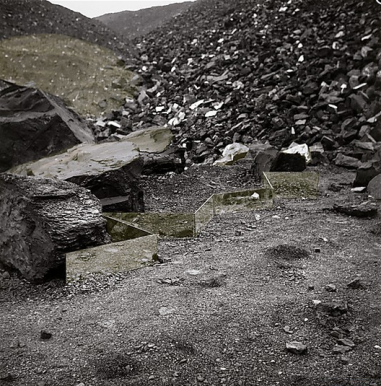ARTIST RESEARCH, ARTIST TALKS, EXHIBITIONS,BOOKS,ETC,…
The Anthropocene
Research
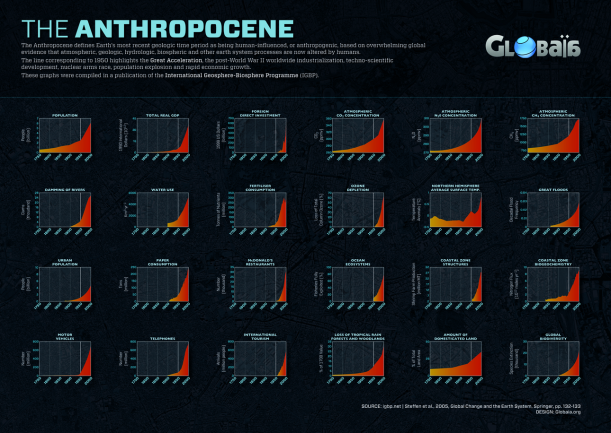
Image from Globaia.org / article: Cartography of the Anthropocene
The Anthropocene defines Earth’s most recent geologic time period as being human-influenced, or anthropogenic, based on overwhelming global evidence that atmospheric, geologic, hydrologic, biospheric and other earth system processes are now altered by humans.
The line corresponding to 1950 highlights the great acceleration, the post-World War II worldwide industrialization, techno-scientific development, nuclear arms race, population explosion and rapid economic growth.
These graphs were compiled in a publication of the International Geosphere-Biosphere Programme.
Suites of New Elemental Landscapes

Map of Upper Klamath Lake, Southern Oregon. The lake is approximately 80,000 acres in surface area and is seen here during a summer bloom of cynaobacteria called Aphanizomenon flos-aquae, or ‘AFA’. AFA feed upon copious amounts of phosphorous in the nutrient-laden water, caused in part by extensive landscape transformations and subsequent shifts in water flow regimes. Rivers and canals are shown in blue and the historic extent of surrounding wetlands in orange (historic wetland survey, circa 1900, courtesy of the Bureau of Reclamation, Klamath Office).
(https://freeassociationdesign.wordpress.com/2013/06/17/suites-of-new-elemental-landscapes/)
Research done on artists that incorporate these ideas into their work
The psychedelic landscape
Kate Shaw
Video projects: (stills)

Fjall
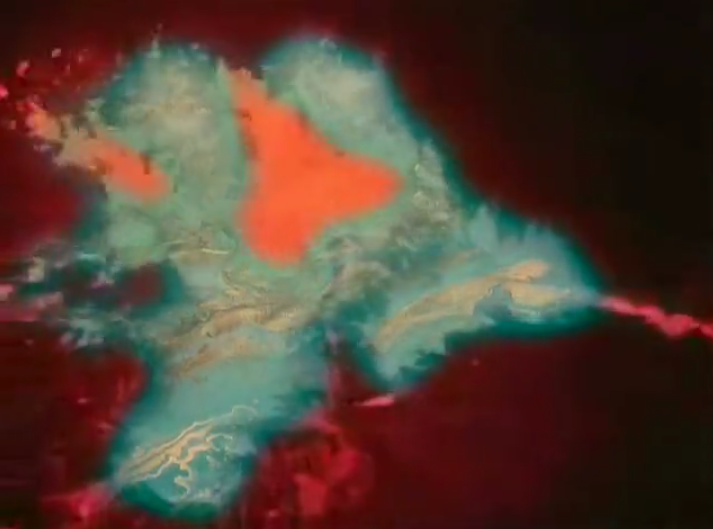
The Spectator
Laura Moriarty
Sculpture
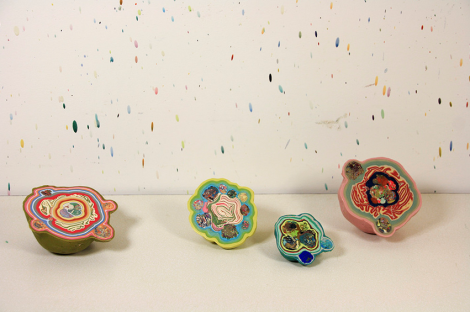
Meteorites, 2016

Bonanza Lode, 2016
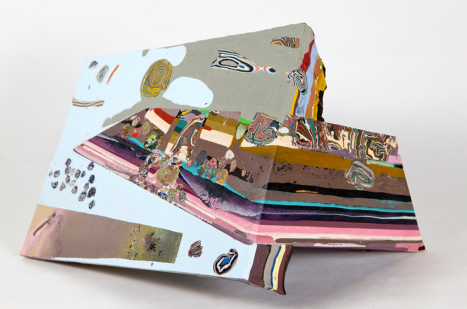
Strike and Dip
2012
ONGOING POST …
♦
BILL MORRISON
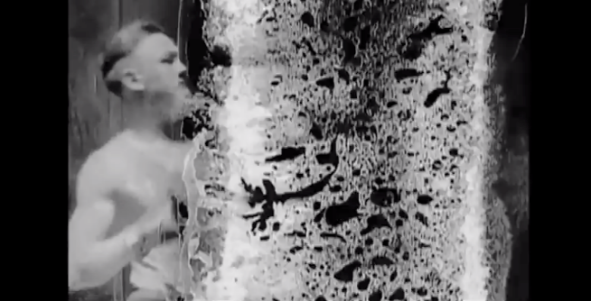
Decasia (Bill Morrison, US, 2002)
The interesting aspect of his work lies not only within’ the actual original source or the artists appropriation of it, but more in the physicality of the raw material. Often called a film archaeologist, Bill Morrison successfully uses archival footage that are in various states of degradation. Old nitrate films that are slowly disintegrating through time are found and brought back to life by Morrison. The strip of film is slowly decaying through time, riddled in bizarre mold and nitrate bubbles which creates strange abstract patterns that come to life once the film is put into action. Strange aureoles and shapes evolve around the image, a ghost like affect that haunts the entire length of the film. In various sequences, different types of decay are more or less apparent since Morrison has assembled these pieces from various place around the world. In the film, we are witnessing women and men from different ethnicities, doing different tasks, performances or are just simply present in front of the camera.
Throughout the film, the recurring pattern of circular movements are apparent in multiple ways. Symbolizing the everlasting circle of construction and deconstruction which parallels the act of re appropriating found footage. Some elements are falling apart whilst being re assembles at the same time. Resulting in strange correlations between the image and the crumbling material. Shapes start to invade the characters world distorting the reality around them. From subtle corrosive specks, to overwhelming larva taking over the image to a point where the viewer struggles to find the image behind the chaos. Faces become perverted as if haunted by the bubbling substance that has made it’s way into their souls.
In one sequence, a boxer tried to fight this menacing presence by frantically bunching the erosion which fights back expanding itself on the image. In an other image, the substance slowly transforms the faces of people giving them a monstrous appearance. Some erosions go unnoticed whilst some characters seem distressed as if feeling its presence.
♦
BOOK
PHOTOGRAPHY IS MAGIC By Charlotte Cotton, 2015
I recently purchased this book which features 80 artists that use an experimental approach to the medium of photography, not only by the subject photographed but by the way in which it is then presented in a 3D space. Here are some of the works I found particularly interesting.
“By considering contemporary photographic practices through the lens of magic, this book has a particular take on the current state of photography’s material presence — its status as a cultural material — within art.” – Charlotte Cotton
♦
READING
Judith Butler, Constitution: An essay in Phenomenology and Feminist Theory/ 1988
According to Judith Butler, gender is socially constructed and comes into being through repetitive performance of behaviours that combine to create our understanding of the body as gendered.
Interesting quotes:
“gender is in no way a stable identity or locus of agency from which various acts proceed; rather, it is an identity tenuously constituted in time – an identity instituted through a stylized repetition of acts.” 519
“If the ground of gender identity is the stylized repetition of acts through time, and not a seemingly seamless identity, then the possibilities of gender transformation are to be found in the arbitrary relation between such acts, in the possibility of a different sort of repeating, in the breaking or subversive repetition of that style” 520
“Body bears cultural meaning”520
“The acts by which gender is constituted bears similarities to performative acts within theatrical context “ 521
“sex as biological facility and gender as a cultural interpretation” 522
“Within the term of culture it is not it is not possible to know sex as distinct from gender” 524
Therefore, identity and gender construction is based on the understanding of a set of cultural laws and codes of behaviour that have been repeated and emphatically set upon people for decades. Sex and gender blur into one state of being.
♦
DOUGLAS GORDON
Film installation
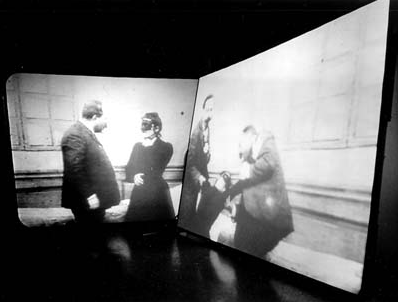
Hysterical (Double Projection Film Still) Douglas Gordon, 1995, Image courtesy Southampton City Art Gallery
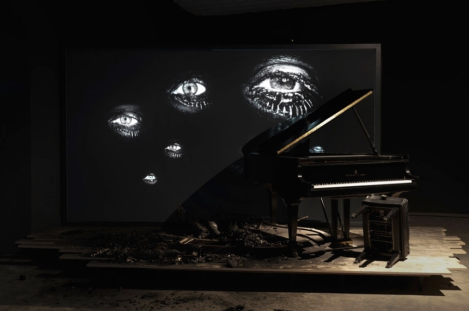
DOUGLAS GORDON -Phantom, 2011 – Video installation with sound
Stage, screen, a black Steinway piano, a burned Steinway piano, one monitor – Dimensions variable
♦
Thin Sections / Research documentation
Discovering the incredible beauty of thin sections (a thin, flat piece of material prepared for examination with a microscope, most often a rock fragment) under cross polarized light.
understanding crystal structures help geologists analyse larger processes within the earths interior.
Optical birefringence refers to the splitting of light waves and is a diagnostic property
Birefringence is the splitting of a single ray of light into two rays of light when it travels through a anisotropic material
The mineral Olivine has high Birefringence so its mineral grains display a huge range of colors, when it is exposed to cross polarized transmitted light
Data gathered from seismic birefringence helps us understand the earths interior and structure
Photos: http://thin-section.com/Thin-Section-Examples.html
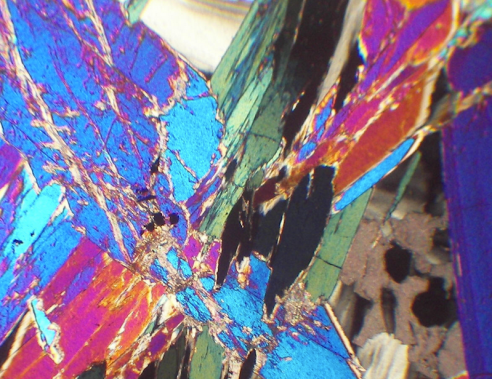

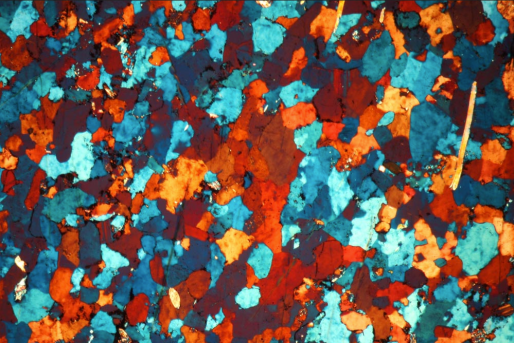
Trias-Sandstone

Fossilized dinosaur bone POL

Degraded tooth of Capreolus capreolus (10x)
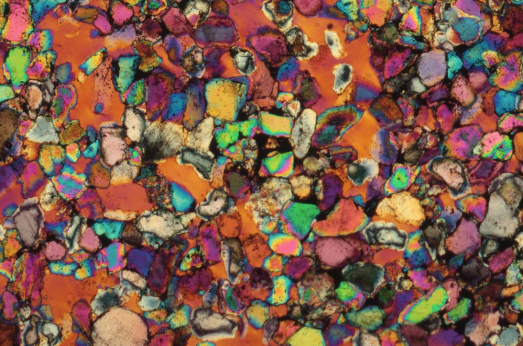
Bentheimer Sandstone (25x)
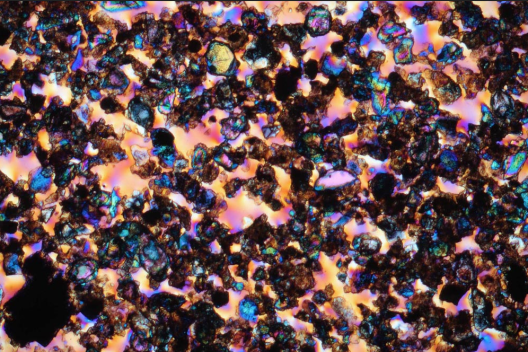
Aerolith particle filter (25x)
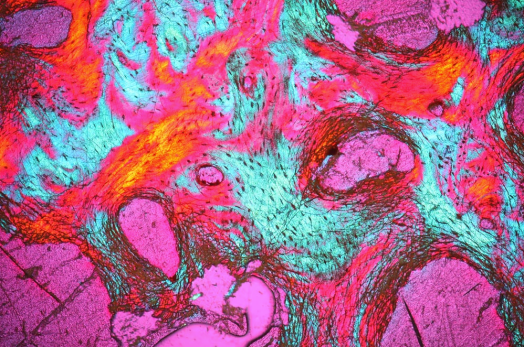
fossilized dinosaur bone POL Lambda
Here are the micrographs of thin sections that I collected a few years ago:
https://dlouisegreen.wordpress.com/2014/12/01/photomicrographs/
♦
BOOK
GIUSEPPE PENONE
I recently bought a book on Giuseppe Penone’s whole body of work. I only discovered him whilst looking through books in a Gallery. He is an Italian artist that belongs to the Italian movement “Arte Povera”. I really enjoy how he establishes a contact between man and nature using unconventional materials and processes.
♦
HITO STEYERL
Video projection and installation :
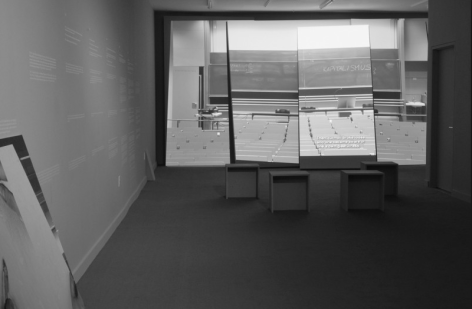
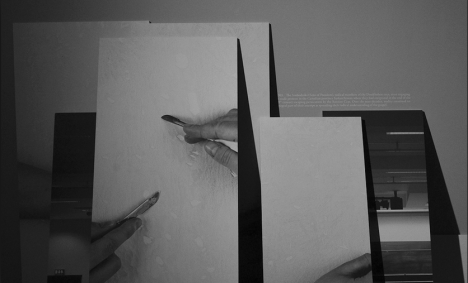
HITO STEYERL, Adorno´s Grey, 2012
♦
READING
Thomas Nagel, “What is it like to be a bat?”
Research done by philosopher Thomas Nagel and his paper “What is it like to be a bat”(1974) particularity made me question the subjective human perception vs. the other ex. Animals and plants visual and non visual perception of their surroundings. Taking the example of the bat that does not see its surroundings as humans do but creates a visual representation of space through echolocation. Nagel questions the actual conscious experience of the bat and not our human interpretation of it.
♦
ARTIST TALK
SHARON KIVLAND / 09.03.2016
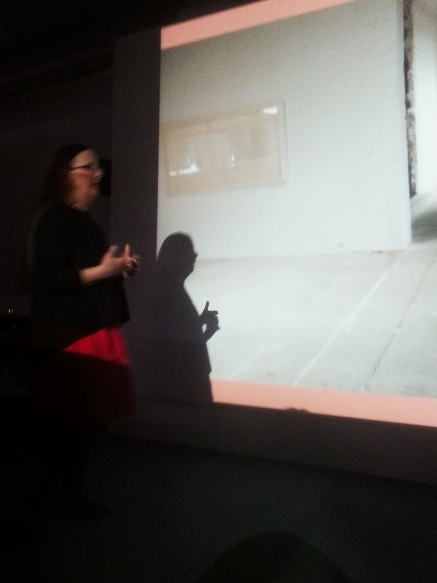
Artist Sharon Kivland’s oral presentation of her work was done in such a way that the audience cannot help but be enticed by what she is saying. Her dramatic and poetic way of speaking about her body of work is captivating.
A part from the fact that I found her presence, attitude and wittiness extremely contagious. Having Kivland go through her exhibitions and explain the close relationship between different objects and their intricate significations, was really interesting as the amount of research and intertextuality that is created in her show can only be comprehended through the words of the artist herself. Focusing on Freudian and Marxist theories, her work seeks to link theory and practice.
♦
ARTIST TALK
A.A.S / 03.03.2016
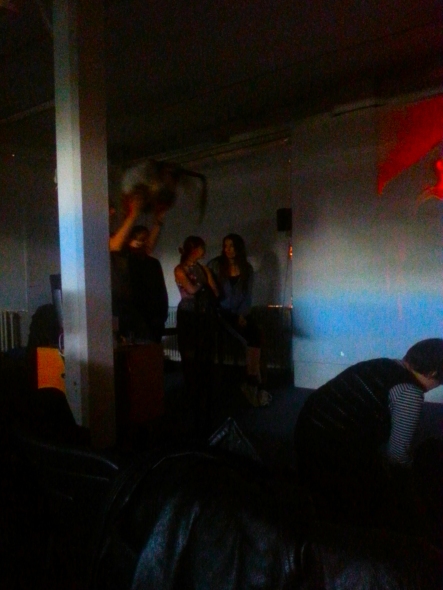
The presentation by artists from the A.A.S. “collective” drew some contovercy as some students did not support the performative aspect to it. From the very start, we are confronted with aural, visual and sonar experiences as presentation and performance are happening simultaneously. A.A.S are interested in the concept of emotional flooding, overwhelming their audience through ritualistic inspired repetitions of actions. Questioning magic in relation to art and meditative states in order to lose a sense of oneself. Which inevitably can cause a release of suppressed feelings which happened during the presentation. My view is not from the point of view of the people that experienced it in a negative way, but I do believe that the fact that unease was created throughout the audience only helped but fortifies the effect and point that A.A.S were trying to make. Their performance work seeks an emotional/physical response from its audience whether good or bad. The interesting element lies in its unpredictability. Questioning the individual’s personal experience of the event and their subconscious.
Their interesting perception of a collective was also brought to my attention as they do not have a fixed notion of their collaborative practice and do not consider themselves as a collective. No one member can fully comprehend the totality of the groups identity as they have no fixed boundaries to the conception of their practice. Each artist contributes different aspect to the group that may or may not be similar to other members. This was felt in their style of presentation, that was not planed as a whole but organised separately without the mutual consent of other members of the group.
An other interesting point was the way in which they record and document their performances. Multiple video footage from different point of views are assembled to create different versions of the same event. Ultimately they see the camera as a character of it’s own and plays an important part in their visual identity.
During the performance, music was made through a non hierarchical process. Through communication of feeling and energy, 4 student performers mechanically made divers sounds through text reciting, knocking on walls, pipes, throwing wooden pieces on the floor, etc,… Furthermore, the voices of the artists were at times more or less submerged in this melodic sea, resulting in a chaotic construction of rhythm and sound. Through this process, we witnessed an interesting way of creating sound and music outside of social expectation and prediction.
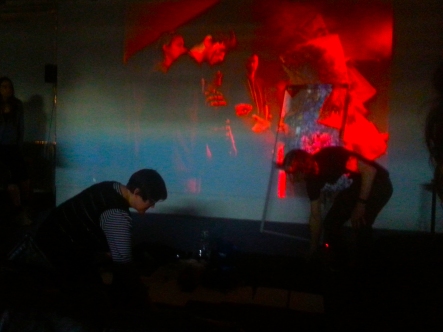
♦
EXHIBITION
AMSTERDAM – EYE FILM INSTITUTE
17 February 2016
Exhibition Close-Up – A New Generation of Film and Video Artists in the Netherlands. This group exhibition features numerous recent film and video works and spatial installations by a new generation of filmmakers and artists in the Netherlands, who are breaking down the barriers between film, video and visual art.
Here are a few artists that particularly caught my attention and why…
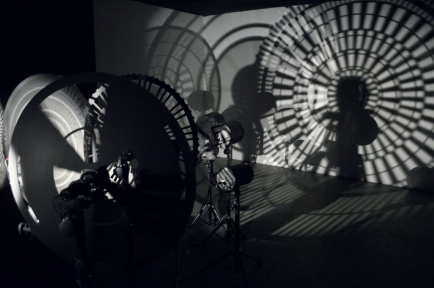
MARISKA DE GROOT, CineChine (2012)

HELEN DOWLING, The Burning Time Slideshow (2015)
AMOS MULDER, Don’s Dream (2014)
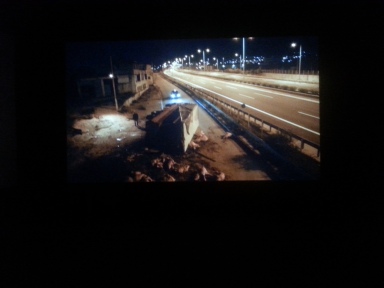
JANIS RAFA, Requiem to a Shipwreck (2014)
FELIX BURGER, Collectile (2016)
LICHUN TSENG, Jianjian (2016)
DAVID VERBEEK, Full contact. 2016
?
Use of sound
♦
EXHIBITION
FOAM – AMSTERDAM
16 February 2016
Awoiska van der Molen, Blanco
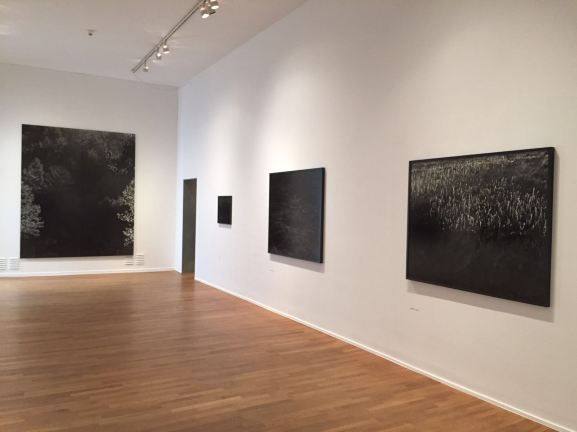
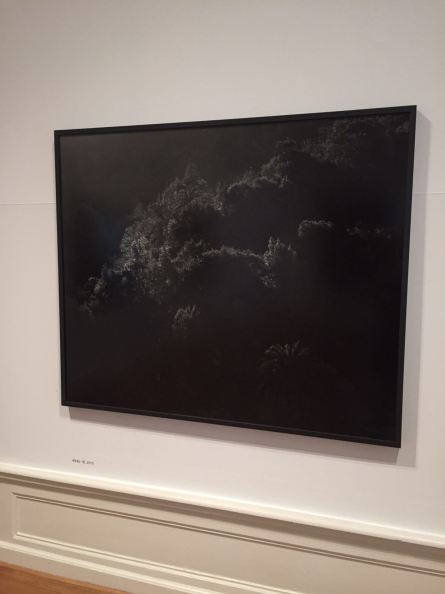
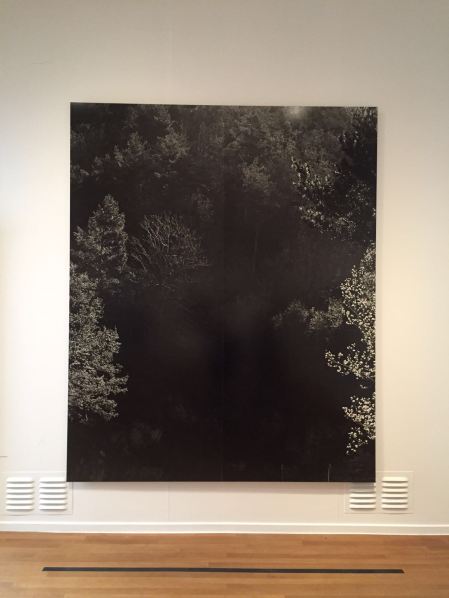
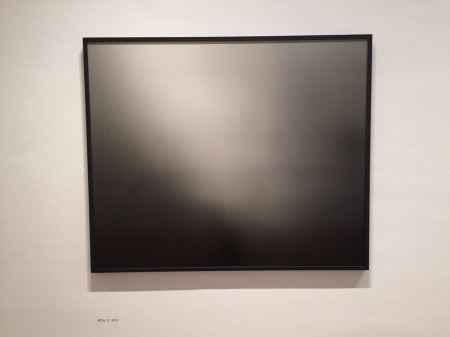
♦
SEMINAR
ANGUS WYATT

The “Uncanny Valley” is when the features of the entity move and look almost, but not exactly, like human beings. the “valley” is a dip in a graph that represents human discomfort caused by the feeling you get when confronted with something that presents itself as human but is lacking the qualities to pass as human. It plays on our subconscious fear that we are all just soulless machines. There is a fear of being replaced. If it looks sufficiently non human there will be an element of empathy. However if the entity attempts to look more human the non human characteristics will be more noticeable.
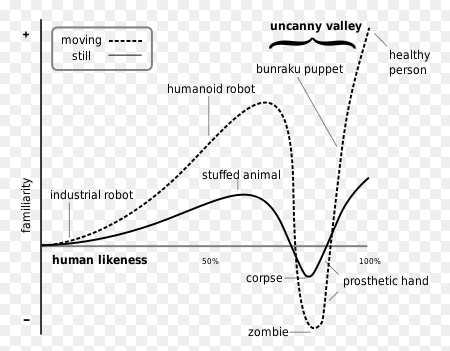
Mike Kelley, The Uncanny Exhibition
The exhibition consisted of a substantial number of figurative sculptures that embody the feeling of the uncanny through their scale, use of colour, form and material. Mike Kelly relates these to the idea of the ‘double’ – the disturbingly realistic representation of the human figure suspended between life and death.
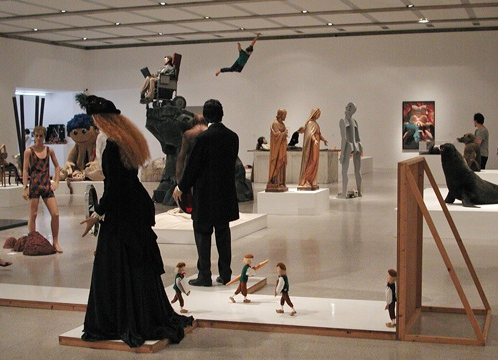
♦
ARTIST TALK
CLAIRE POTTER / 03.02.2016
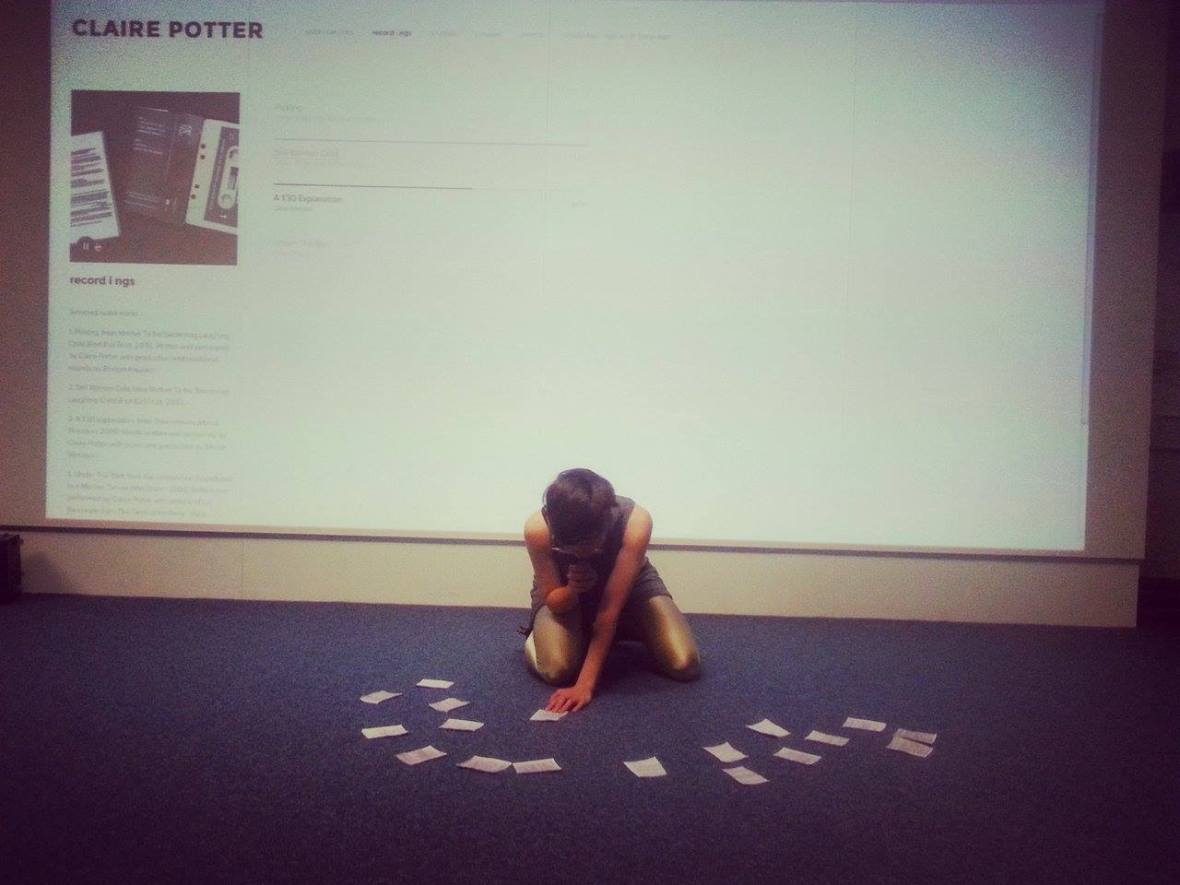
On site performance / approx. 6min
University of Reading, 03.02.2016 (Art Department)
Claire Potter is an artist writer form Merseyside who works with modes of reading and speaking. Her use of language as material, particularly interested me as she is successfully exploring the link between words and the aural expression of these words through performance art.
Examining the act of reading, she questions the use of the A4 page and acknowledges its presence, instead of ignore it. Furthermore, The act of reading is challenged as she seeks to disrupt its flow. She puts herself in uncomfortable positions in order to restrict her reading, resulting in a breathless, hesitant speech disrupting the cadence of language and its fluidity. By doing so her performative readings meets the content of her writings. Questioning not only the worlds but the way in which these words are said.
♦
READING
Peter Gidal, Theory and Definition of Structural/ Materialist Film 1976
Exploring the apparatus of the image, exposing it’s constructiveness. focusing on materialism rather then using the image as a window into another dimension.
Ideas of Structural/ Materialist films
In Theory and Definition of Structural/ Materialist Film, published in the BFI’s Structural Film Anthology in 1976, Peter Gidal explains that he believes that film should be seen as a documentation of a technical development that able us to capture an image. That our attention should not be brought to the 3D space, characters and narrative plot that we see on screen but to the actual physicality of the screen and the technical apparatus that allows us to capture and document what we see in font of us. That said, structural and materialist films should aim to demystify the fabrication of an image, creating a non illusionistic effect. These ideas have been on my mind and although I am interested in them, I find it hard to associate them with the work I am currently doing in general.
Found here: http://www.luxonline.org.uk/articles/theory_and_definition%281%29.html
♦
ANA MENDIETA
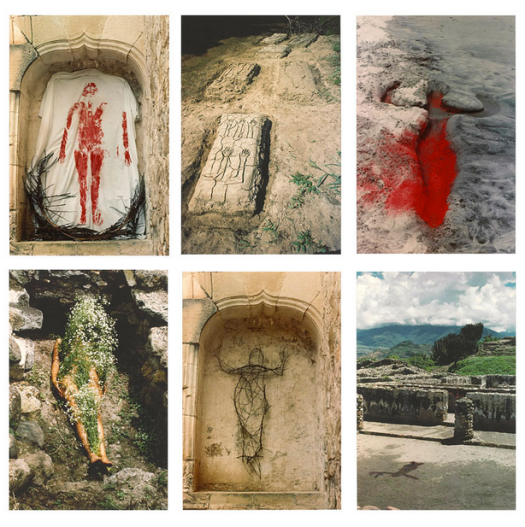
Ana Mendieta. Untitled (Silueta Series). 1973. Red tempera
Cuban artist Ana Mendieta’s work is generally focused around feminism, life, death and the idea of place and belonging. Portraying the female form and identification through sculpture and installation. Her Silueta Series is an inaugural work in earth-body art, emerging along with the new movement of land art, body art, and performance art. The series, lasting from 1973 – 1980 and consisting of over 100 siluetas, works to inscribe the female into the landscape, drawing on Mendieta’s favored motifs of blood, motherhood, and Santería. Many images in the series represent Orishas, deities in the Yoruba/Catholic syncretic religions.
The element that particularly interested me in her work is the way she reconnects the human form with the landscape. Often without the presence of the physical body which symbolises the absence of the female presence from historical context. In addition to this, Mendieta symbolically reconnects body and earth as the modern man is currently drifting further away from its natural state.
♦
ROBERT SMITHSON

Robert Smithson, Yucatan Mirror Displacements (19), 1969, Yucatan, Mexico
Robert Smithson, Untitled (Zig-Zag Mirror Displacement), 1969

Robert Smithson, Mirrors and Shelly Sand, 1969/ 1970
♦










